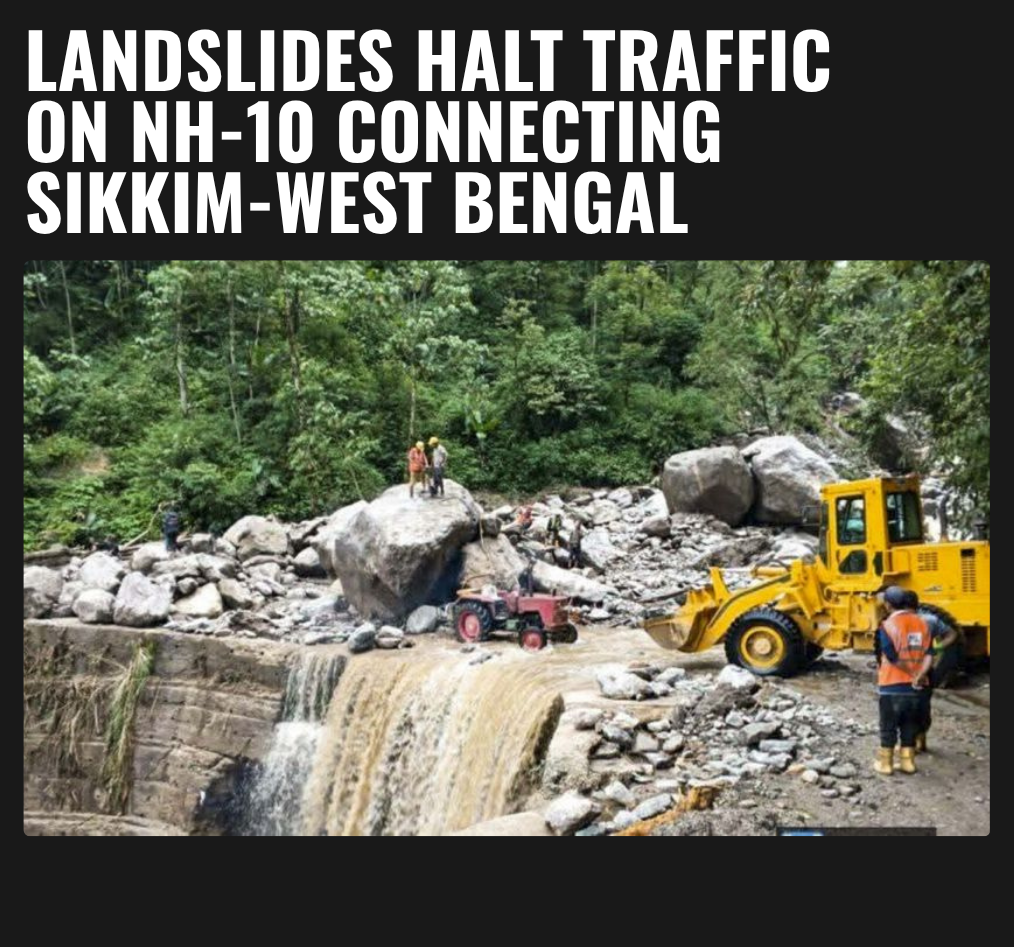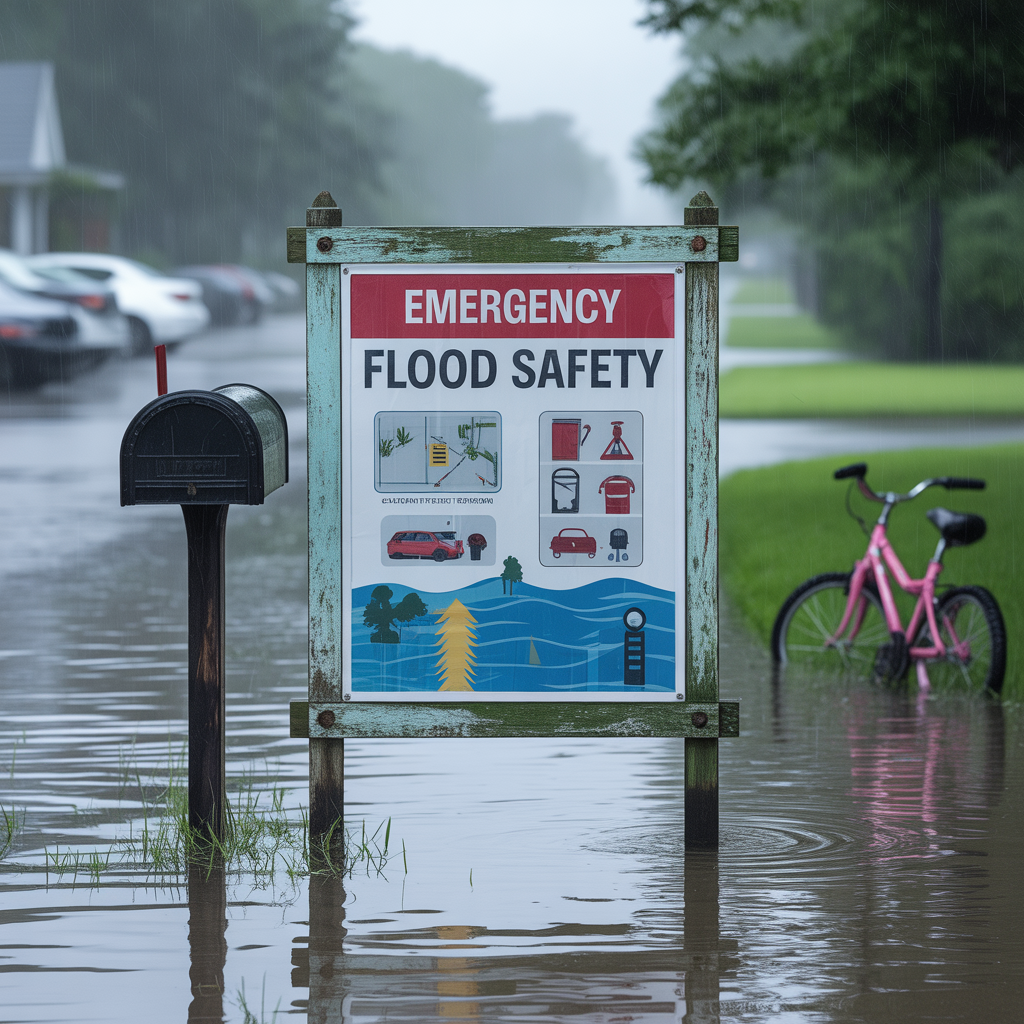Relentless monsoon rains have caused severe Teesta floods and triggered multiple NH10 landslides, bringing widespread disruption across North Bengal. Authorities have urged residents to remain alert as the situation continues to unfold with more rainfall expected.
Swollen Teesta River Floods Low-Lying Areas and Affects NH10 Highway
Due to sustained heavy rainfall, the Teesta River has surged beyond normal levels, flooding nearby villages and agricultural zones. Low-lying areas near Siliguri and Rangpo have experienced severe waterlogging. Several sections of NH10, a lifeline for North Bengal and Sikkim, are submerged and partially closed.
For official updates, refer to the India Meteorological Department website.
Landslides Block Key Sections of NH10

Landslides have hit vulnerable stretches near Kalimpong, Melli, and Rangpo, with roads blocked by debris and mud. Movement of both commercial and private vehicles has slowed, and travelers are advised to postpone non-essential trips. Road-clearing operations are ongoing despite difficult weather conditions.
IMD Forecast: More Rainfall and Red Alerts
The India Meteorological Department (IMD) has issued red and orange alerts for Darjeeling, Jalpaiguri, and Kalimpong districts over the next three days. Rainfall exceeding 10 cm/day is forecast due to a strong Bay of Bengal low-pressure system.
Dr. Anjali Singh from IMD Kolkata stated:
“The monsoon trough is currently very active over this region. People must remain indoors and stay away from unstable slopes.”
Relief and Rescue Operations Intensify Amid Ongoing Crisis
As the situation remains fluid, the West Bengal government, along with central agencies like the National Disaster Response Force (NDRF), continues to ramp up relief efforts. Over 2,000 people have been relocated from flood-affected areas along the Teesta basin to temporary relief shelters set up in Kalimpong, Jalpaiguri, and Darjeeling districts.
Earth-moving machinery and emergency personnel are working around the clock to clear debris from NH10 landslides. Medical camps have been established along alternative routes to support stranded travelers, while helicopters have been placed on standby for emergency evacuations in remote hill villages cut off by the landslides.
The West Bengal State Disaster Management Authority (WBSDA) has also partnered with NGOs to distribute food packets, bottled water, blankets, and hygiene kits to affected families. Efforts are being made to restore electricity and mobile connectivity in several areas that went dark following powerline collapses.
Travelers can find real-time updates from National Highways Authority of India and West Bengal Disaster Management portals.
Impact on Local Economy and Daily Life
Flooding and landslides have:
- Damaged crops in the fertile Teesta basin
- Reduced workforce access to tea gardens
- Slowed freight and commercial deliveries
- Affected tourism in Sikkim and Darjeeling
Local businessman Ramesh Thapa said:
“We’re facing shipment delays and higher transport costs. It’s affecting everyone from traders to tourists.”
Agriculture and Tourism Hit Hard by Monsoon Disruptions
The impact of Teesta floods and NH10 landslides has rippled through the region’s economy. Local farmers report widespread crop damage, especially in paddy fields and vegetable farms near riverbanks. Early estimates suggest that nearly 1,500 hectares of agricultural land may be affected.
The region’s tea industry, which depends on both good weather and timely transportation, has also taken a hit. Waterlogged tea estates have been forced to suspend plucking operations, while logistical bottlenecks due to roadblocks have delayed the shipment of processed tea to markets.
Tourism — a vital revenue source for towns like Darjeeling and Gangtok — has also suffered. Dozens of tour groups have canceled or postponed travel plans due to road closures, hotel inaccessibility, and safety concerns. Many local guesthouses and transport operators are reporting losses during what is typically the high monsoon season for eco-tourism.
Government Plans Long-Term Resilience for NH10 and Teesta Region
Recognizing the increasing frequency of extreme weather events, both the West Bengal and Sikkim governments are now focusing on building long-term infrastructure resilience. NH10, being the main lifeline to Sikkim, is at the center of these efforts.
Some of the proposed measures include:
- Widening and reinforcing critical stretches of NH10 using landslide-resistant materials
- Installing geo-grid retaining walls and slope stabilization systems
- Modernizing the region’s drainage networks to handle excess monsoon runoff
- Creating satellite-based early warning systems for landslides and flash floods
- Launching training programs for community-level emergency preparedness
The National Highways Authority of India (NHAI) is also expected to work in coordination with BRO (Border Roads Organisation) for better disaster-proofing of strategic routes leading to border areas through Sikkim.
Safety Measures: What Residents and Travelers Should Do

Authorities have reiterated the importance of community awareness and preparedness in minimizing loss of life during monsoon emergencies. The following guidelines are recommended:
- 📍 Check NH10 road updates via official traffic bulletins or the NHAI website.
- ☔ Avoid crossing rivers or streams even if water levels appear low — flash floods can occur rapidly.
- 🚨 Report signs of slope cracks or water seepage to local disaster teams as these can precede landslides.
- 📦 Keep a go-bag ready with essentials like bottled water, dry food, flashlight, power bank, essential medications, and important documents.
- 📱 Follow weather alerts through trusted sources like the India Meteorological Department (IMD).
Climate Change and the Rising Risk of Monsoon Disasters
Experts are increasingly linking the intensity of these monsoon disruptions to climate change. Unpredictable rain patterns, coupled with poorly planned hillside construction and deforestation, have heightened the risk of both floods and landslides across the Himalayan foothills.
Dr. Nirmal Das, a geographer at North Bengal University, explains:
“Events like the Teesta floods and NH10 landslides are no longer one-off incidents — they’re becoming annual patterns. We need adaptive infrastructure, but also policy shifts to regulate hillside development.”
United Efforts Needed to Build a Safer Future
The Teesta floods and NH10 landslides serve as a sobering reminder of the need for coordinated action between governments, citizens, and scientific bodies. As North Bengal and Sikkim prepare for more rainfall in the coming days, public cooperation, real-time data sharing, and long-term investments in climate resilience will be key to mitigating the worst effects.
While recovery is underway, restoring normalcy — and preparing for future weather extremes — will require both urgency and foresight.




